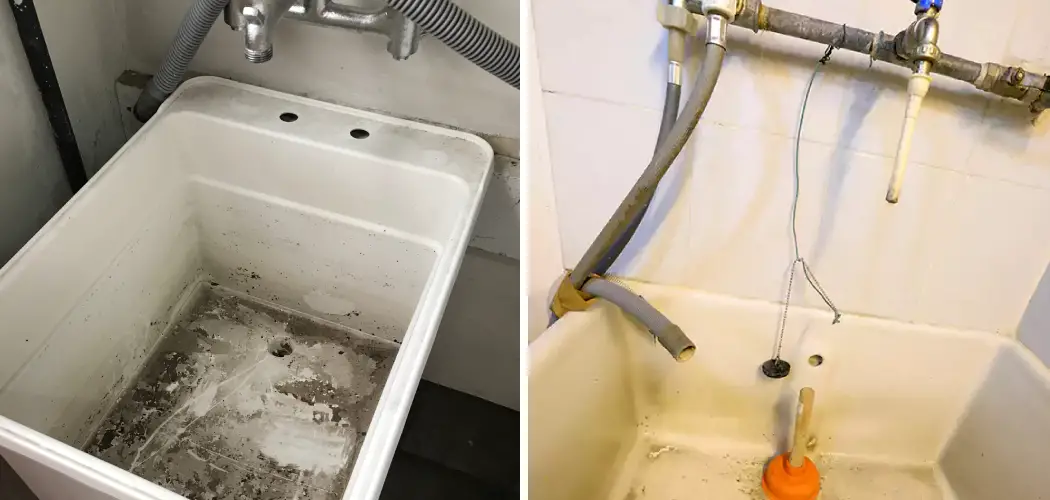Do you often find yourself standing in a pool of soapy water, wondering how to unclog your laundry sink? You’re not alone! Clogged sinks in the laundry room are one of the most common plumbing problems homeowners face. If this is an issue that you’re dealing with right now, fear not – tackling a clogged drain can be much easier than it looks! It is important to know how to unclog laundry sink.
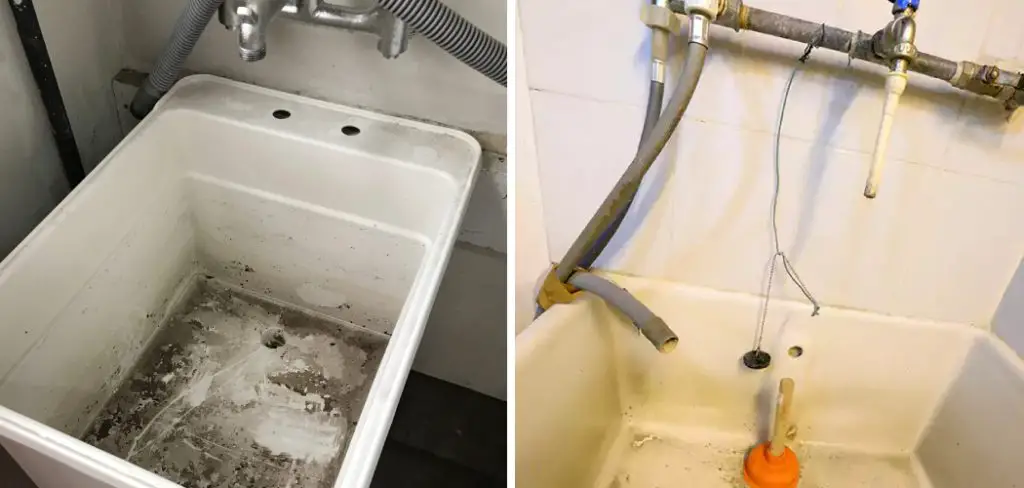
In this blog post, you’ll learn everything you need to know about fixing blocked drains and pipes safely and efficiently. With our step-by-step instructions, tips on preventive maintenance, and valuable suggestions for professional help if necessary – you’ll soon have your sink working like new again.
So read on to find out more about these simple but effective strategies for unclogging your laundry sink today!
Tools You Will Need
- Plunger
- Drain snake
- Screwdriver (if needed)
- Protective gloves, glasses, and a face mask
8 Steps Guide on How to Unclog Laundry Sink:
1. Remove Any Visible Debris
The first step to fixing a clogged drain is to clear the debris that is blocking or slowing down the flow of water. First, check for any visible obstructions on top of the drain opening such as hair, soap scum, food scraps, etc. Then use a screwdriver to loosen and remove screws if necessary before taking out any stuck material with your hands or a pair of pliers.
Once there are no blockages in sight, run some hot water through the drain to ensure it is flowing freely again. Some derbies can affect the whole system. They can react with some vital parts. So, it is important to remove any visible derbies to have a perfect function.
2. Push Out the Blockage
Unclogging a sink doesn’t have to be a daunting task. After removing any clogs you can see on top, using a plunger is the next step. Simply make sure the plunger is secure and covers the drain hole before pushing up and down multiple times quickly.
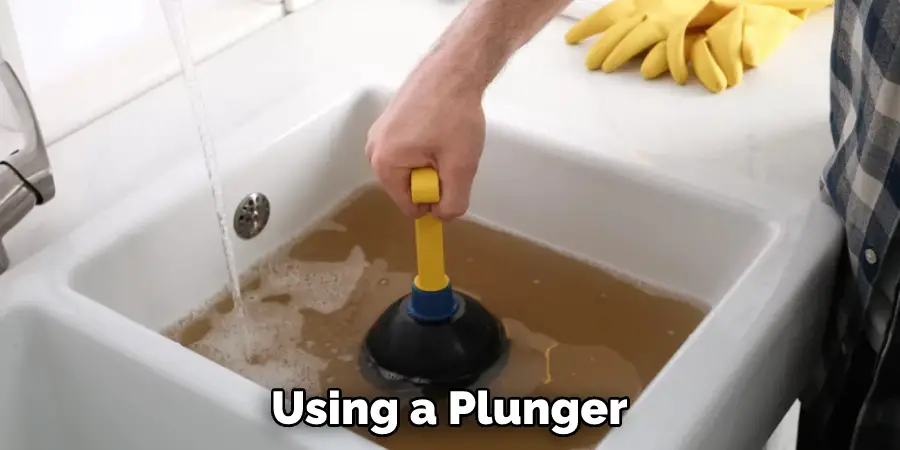
This method is proven to help dislodge whatever may be blocking your plumbing system. With a few simple steps, your sink could be draining as well as new in no time!
3. Move Onto a Drain Snake
If simple draining and plunging don’t seem to be resolving your sink issues, it might be time to reach for a drain snake. Instead of an actual store-bought device, a metal coat hanger cut to size will do in a pinch. Once inserted into the drain hole, slowly turn and press down on the snake.
This should help clear any clogs that are stuck further down the drainage system. Of course, depending on how tough the clog is, you may have to repeat the process multiple times or try alternative methods such as baking soda or vinegar.
4. Move on to a More Robust Approach
A chemical drain cleaner is a highly effective way to address stubborn blockages in sinks, showers, and other drains. It can break up even the most stubborn obstruction, allowing water to flow through your home plumbing system with ease. It’s important to follow the instructions on the product packaging carefully to ensure its safe and effective use.
Make sure to wear protective gear such as gloves and eye protection when handling these products, as they can be hazardous if not used correctly. With the right steps, a chemical drain cleaner is a surprisingly efficient way of dealing with drainage problems.
5. Pour Hot Water Into the Sink
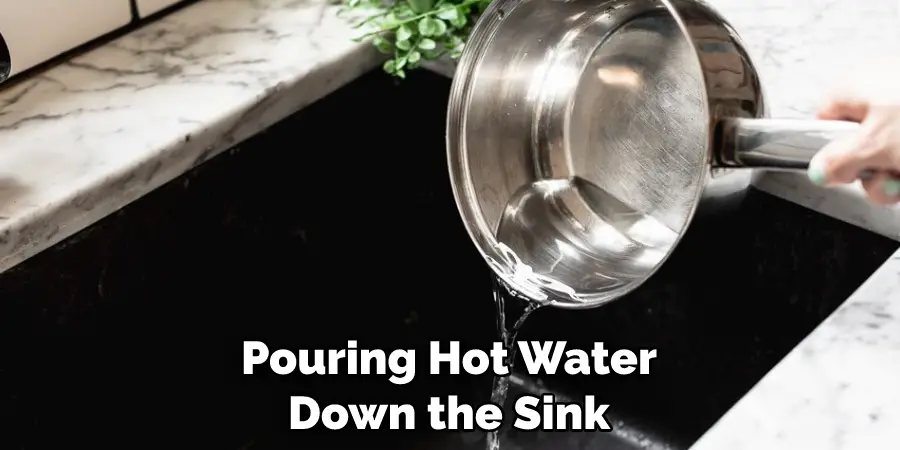
Hot water is often your go-to solution when it comes to unblocking clogged drains. Whether the drain is blocked with grease, soap, or anything else, pouring hot water down the sink will go a long way in helping break it up and get it on its way.
The power of hot water should not be overlooked as an effective and inexpensive solution for an otherwise tenacious problem. Don’t despair if regular plunging or other methods don’t seem to work–give the hot water method a shot before throwing in the towel!
6. Remove the Entire Sink
Unclogging a drain can be stressful, especially when the plunger isn’t doing the trick. If you are at your wits’ end, it might be necessary to remove the entire sink. Before embarking on this project, make sure to turn off all electricity and water sources connected to the sink, so that no accidents occur.
Once disconnected, attempt to carefully unscrew any bolts found around or underneath your sink and gently lift them. Make sure to have a bowl handy as well as a bucket since water may come out upon removal of the sink basin.
Following these steps can help in accessing the clogged pipe beneath the sink and potentially unclogging it once and for all.
7. Remove Whatever is Blocking It
Accessing the pipe is just the first step to unblocking a clog. Once you’re in, it’s time to take out whatever is causing the blockage. A drain snake can be used to remove small debris and a pair of pliers for larger items.
If that does not succeed, then it’s necessary to cut out the section of the pipe and replace it with a new one. Make sure all connections are secured firmly when putting everything back into place or else you risk having future leaks or other issues.
8. Reattach the Sink
Once you have followed all the steps to properly unclog your sink, it’s time to make sure it is back in working order. Test the drain by running some hot water into it; if it starts draining normally and quickly, congratulations! You can confidently reattach the sink and take pride in a job well done. At this point, your drain should be completely unclogged and flowing freely.
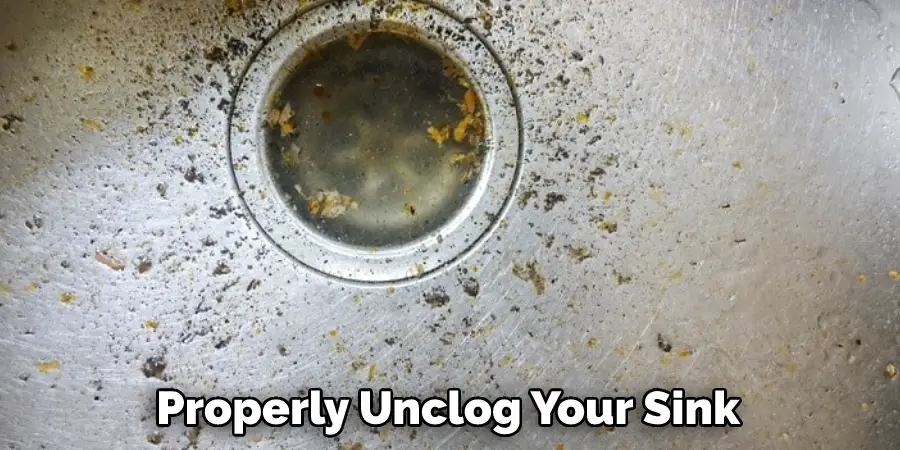
5 Preventive Maintenance Tips
- Regularly check for blockages in the sink and pipes.
- Use a strainer in the sink or disposal to catch food and other debris that can cause clogs.
- Don’t pour grease, oils, or fats down the drain–they will solidify over time and may create a blockage.
- Use environmentally friendly cleaning products on your drains to help reduce the buildup of organic matter in your pipes that could lead to a blockage.
- Make sure to clean out your sink and pipes regularly to prevent a future clog.
Clogs can be inconvenient and irritating, but with the right tools and knowledge, you can unclog your laundry sink quickly and efficiently. Remember to use hot water as a first step and if that doesn’t do the trick, move up the ladder to a plunger or drain snake.
If all else fails, it may be necessary to remove the sink and replace part of the pipe if needed. By following these steps, you will likely have your laundry sink back in working order in no time!
Good luck and happy unclogging!
Frequently Asked Questions
How Do You Prevent Clogged Laundry Sinks?
Clogged laundry sinks can be a major inconvenience, especially when you need to do the wash. Luckily, there are a few preventative measures you can take to reduce the chances of your laundry sink clogging up. Primarily, it’s important to ensure that only water and appropriate clothing items go down the drain while washing.
Moreover, avoid letting lint or pet hair slip through the filter into the sink – maintain it regularly so that no obstructions accumulate. Finally, pour hot water and dishwashing liquid down the drain every week to break up any dirt that may have accumulated as well as aid in clearing out any soap scum buildup.
Taking these simple preventive steps can help ensure that you won’t be dealing with a clogged sink anytime soon!
How Do You Access the Pipe Below a Laundry Sink?
Accessing the pipe beneath your laundry sink can be difficult and time-consuming, but important to unclog a stubborn drain.
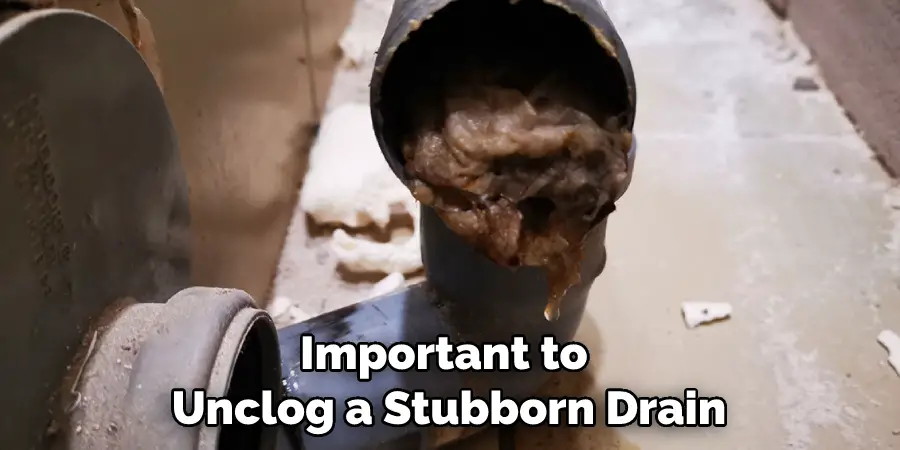
To begin, first, turn off the water to the washer so that no one gets injured while working on it. Next, unscrew the drainpipe from underneath the sink and place it in a safe spot. Once you can access the pipe, use a wrench or pliers to loosen any nuts that may be holding the pipe together.
Finally, once all of these steps have been completed, you should have access to the clog itself. With some patience and persistence, this annoying chore should be taken care of in no time. Be sure to keep safety in mind and use proper tools when removing the pipe, as it can be a difficult job.
Conclusion
If your laundry sink becomes clogged, there are a few easy steps you can take to unclog it. You should carefully determine how to unclog laundry sink. Try running hot water down the drain for several minutes.
If that doesn’t work, try using a plunger or an auger If those methods don’t work, you may need to call a professional. However, most clogs can be easily fixed with some hot water and elbow grease.

